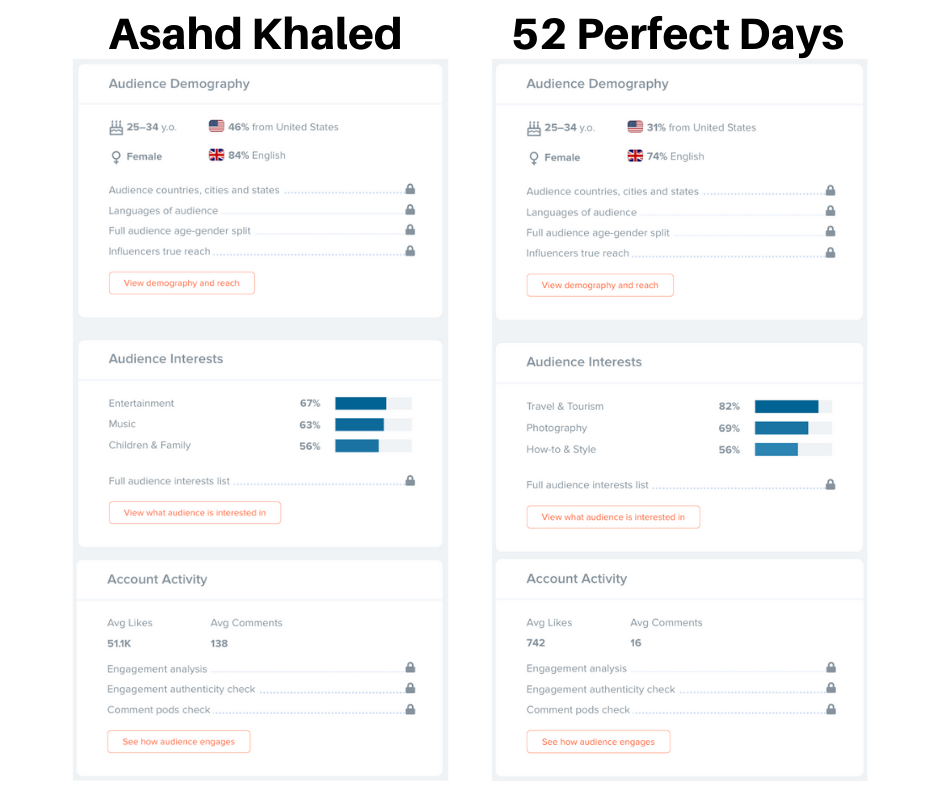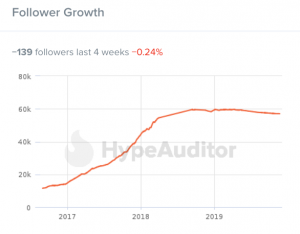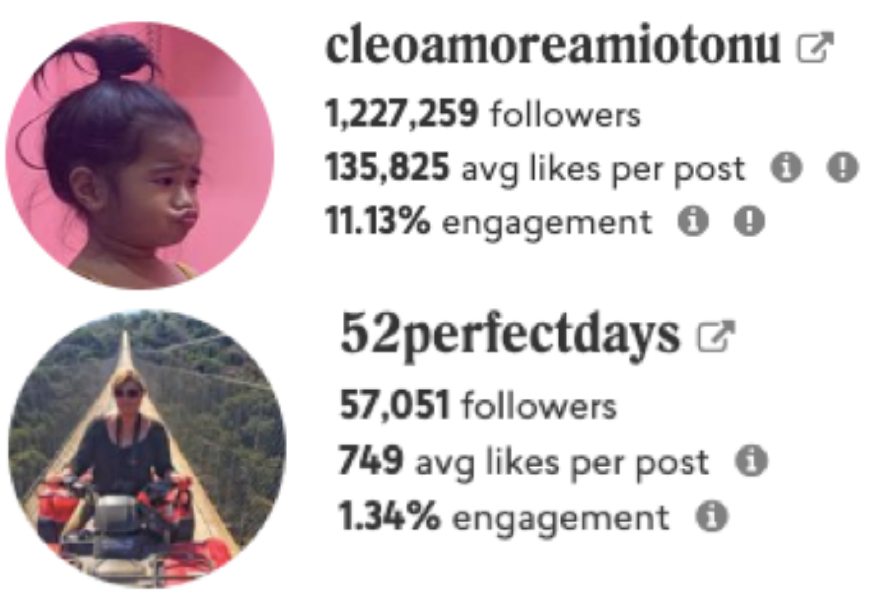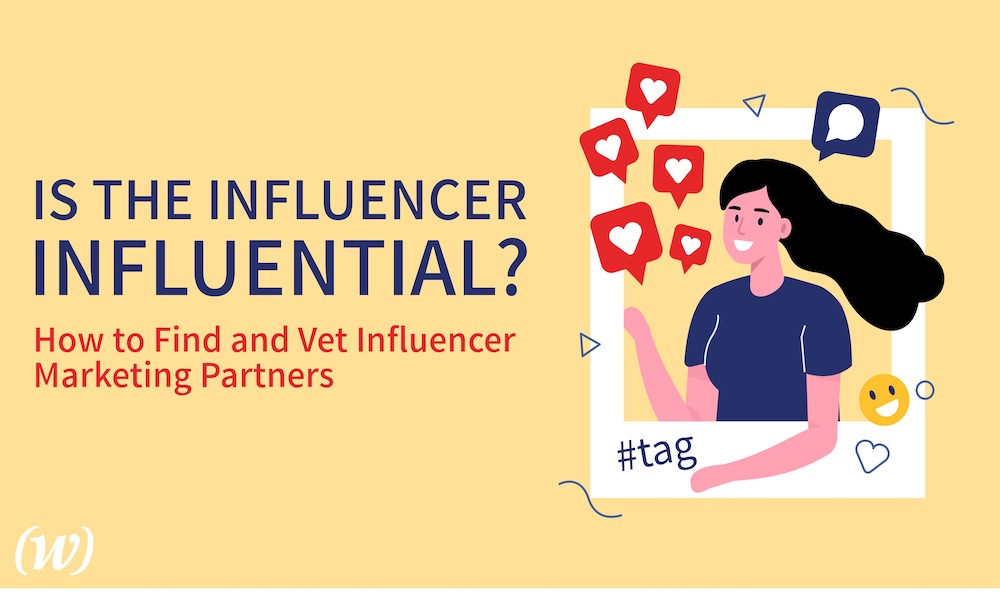Finding the right personality for your influencer marketing strategy is like finding a needle in a haystack. It’s doable, but it takes a lot of time and effort. Except today’s social media haystack is more of a field… the size of Russia.
New influencers popup every day, and some aren’t even cognizant individuals. I’m not just talking about bots, catfishes, and dogs; I’m talking babies with blue checkmarks. Have you seen DJ Khaled’s son Asahd who recently released a Kid’s Foot Locker collection with Jordan’s?! Or Bretman Rock’s niece Cleo Mae who does nothing but be really cute and has a promotion inquiry email in her bio?!?! What. Is. Happening.
View this post on Instagram
Okay, rant over.
Let’s get to the juice, how do we muddle through the real accounts with influence and avoid the #FakeViews AND find someone who will not only increase your brand reach but ultimately boost your conversions and sales.
As Communications professionals, finding the right partnership is an ever-evolving art where we factor in engagement, audience psychographics, influencer genre, whether partnership content can be both promotional and feel native, and how the partnership will reflect on our client’s brand. At (W)right On, we’ve got a few tools, tips and tricks to vet these internet mavens before ever recommending them to a client. Below are our six essential criteria when vetting an influencer.
1. Type of Reach – Is it the target audience for your brand?
Determining which demographics an influencer’s audience consists of (e.g. Millennials vs. Baby Boomers; Fitness Buffs vs. Parents) is the first step when vetting because you want to align your potential partnership with your goals.
For example, say Nike was looking to do a social campaign for a new clothing line and wants to reach a sports-focused audience. Two of the top sports social influencers are ESPN and Barstool Sports. Although they aren’t influencers in the sense of one person, they as publishers have an influential status in the social media realm and highlight differences in the type of reach.
ESPN’s content has a more professional, traditional and news focused tone and their audience demographics are 76% male with a median age of 48. Barstool Sports still has a mostly male audience, but their content appeals to a younger base because it is more edgy, flippant and a little crass.
View this post on Instagram
View this post on Instagram
Russ is still holding off Lamar in our experts’ latest MVP ballot ???? (via @espnnfl)
Since ESPN’s content and audience aligns more with Nike’s target customers and overall brand tone, they’d likely choose to partner with them over Barstool to meet their influencer marketing goals.
Depending on your brand or client partner, there are types of influencers that will be better suited for your goals. At (W)right On, we often work with influencers for our hospitality clients, particularly setting up site visits for Tenaya Lodge at Yosemite and Welk Resorts. Both destinations are ideal for families, so we’ll partner with Mommy bloggers and travel influencers.
A very handy tool we use to ease this vetting process is HypeAuditor. With their free account, you can view a brief analysis of audience demography and interests. For example, below is Asahd Khaled’s audience stats and to the right is 52 Perfect Days, a blogger we’ve partnered with.

P.S. HypeAuditor is a great tool, but it only analyzes Instagram and YouTube so depending on your campaign it may not be as helpful.
2. Are they considered an authority on certain subjects?
HypeAuditor’s audience interest report (shown above) is a great at-a-glance option to see which topics the influencer is most known for. For example, in the hospitality space, we target travelers and lifestyle influencers who are consistent in this focus.
But more than just interest, you want to be sure that the influencer’s “lane” aligns with whatever your message is for the campaign. For example, if your client has a high-end razor, you’d want to partner with an influencer who is known for their luxurious lifestyle. If your client is offering a cheap shoulder season vacation package, you’d target a budget travel influencer.
3. Audience Authenticity – Reach vs. Impact
When looking for individuals that can help you meet your influencer marketing goals, you not only want folks whose follower demographics match those of your brand but also ones with an authentic audience filled with real people actively visiting their social channels. When researching, check for:
- Are there any boughts or bots? HypeAuditor’s one-off reports are $30 and offer a full analysis of true followers, but the free one also shows a chart of yearly follower growth. Here is 52 Perfect Days’ stats:

4. Engagement vs. Followers – Are they responsive and growing?
To get that high ROI, your message needs to be seen. To do so, check for:
- What is the quality of the comments? Are they spammy or real people?
- You’ll have to manually look at a few posts for this, but comments are important because it means they’re resonating with their audience, which assures your brand campaign will be seen.
- Average likes?
- This one’s easy enough because all you really need to do is look at their number of followers and check a couple posts for how many likes they average. If they have 100k followers but 85 likes on most posts, those are most likely bought followers.
- This can also be quickly assessed using tools like HypeAuditor to view engagement rates or another nifty tool, PeopleMap, which primarily analyzes Instagram. Here are a few reports from PeopleMap:

Also, be sure you look at different posts to get a true average. For fitness influencers, their shirtless post-workout poses might drive much more engagement than a selfie while they’re traveling. Knowing what types of posts do the best will help you better evaluate fit and help you determine what sort of content might be most suitable for an influencer marketing campaign.
5. Quality of Content – Tone, Writing Style, Topics
When researching influencers, especially bloggers, evaluate their ability to tell a story and frame it well. It’s hard to make sponsored content feel organic, but it’s impossible to do if the influencer has built an audience purely on personality and not on content or storytelling. Reading their posts is a start, but also ask:
- What is the overall tone of their content? Is it authentic, static, dull, relatable, short, trendy, basic, long, like a blog?
- Does their tone align with your brand’s tone and values?
- How often do they post?
- Where is the content published? Multiple social accounts, blogs, media websites?
- What topics do they primarily focus on and which ones receive the most engagement?
6. Previous Brand Collaborations – Quality and Quantity
Each influencer approaches partnerships and campaigns differently. Some want comped meals and activities, while some charge a fee. Depending on your campaign goals, budget, and expected ROI, in addition to vetting the quality of the influencer’s audience engagement and past partnership posts, you should also consider:
- Have they promoted brands before?
- How many?
- Are they your competitors?
















